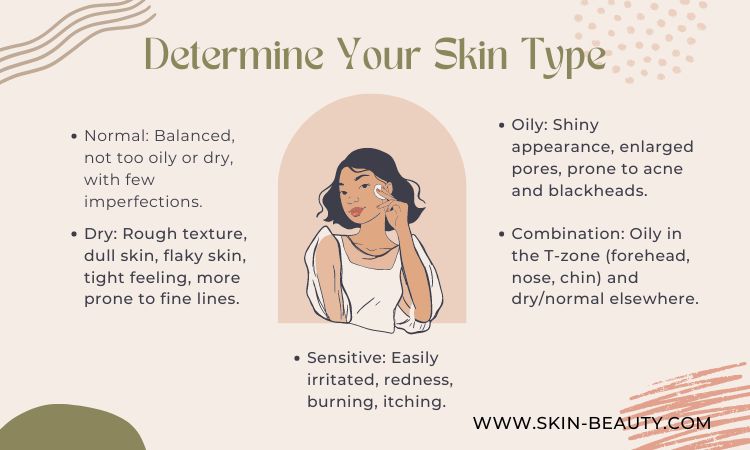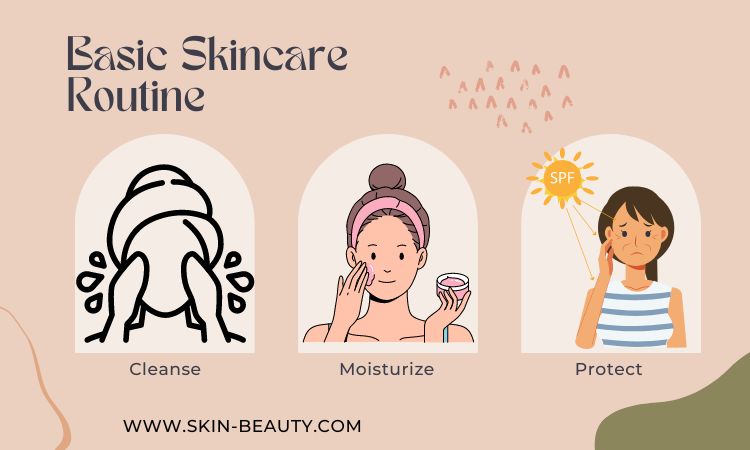How To Build A Skin Care Routine
Building a Skin Care Routine: A Step-by-Step Guide
Having a proper skin care routine is essential for maintaining healthy and glowing skin. Your skincare regimen should be tailored to meet your skin's specific needs and address any concerns you may have. Understanding your skin type and concerns, selecting suitable products, and following a consistent routine can help you achieve your skin goals.
Understanding Your Skin To Build a Skincare Routine
Before starting a skincare routine, it's crucial to determine your skin type in order to build the best skin care routine that will achieve the best results. Common skin types include dry, oily, combination, and sensitive. Identifying your skin type will help you choose the right products that cater to your specific needs. In addition to understanding your skin type, it's essential to recognize common skin concerns such as acne, wrinkles, dark spots, or sensitivity. If you have specific skin concerns, consulting with a dermatologist can provide you with personalized skincare advice tailored to your needs.
Creating a Basic Skincare Routine
A basic skincare routine typically involves cleansing, moisturizing, and protecting your skin. Cleansing your skin helps remove dirt, oil, and impurities that can clog pores and lead to breakouts. Choosing the right skincare products that suit your skin type is imperative. Whether you have dry, oily, or sensitive skin, customizing your routine with suitable products is key to maintaining healthy skin.
Step 1: Determine Your Skin Type
Understanding the different skin types is the first and most crucial step in building an effective routine. Here are the common skin types and their characteristics:
- Normal: Balanced, not too oily or dry, few imperfections.
- Oily: Shiny appearance, enlarged pores, prone to acne and blackheads.
- Dry: Rough texture, dull skin, flaky skin, tight feeling, more prone to fine lines.
- Combination: Oily in the T-zone (forehead, nose, chin) and dry/normal elsewhere.
- Sensitive: Easily irritated, redness, burning, itching.

Step 2: Basic Steps In A Skin Care Routine
A basic skin care routine consists of three essential steps: cleansing, moisturizing, and protecting. Here’s how to build your foundation:
Cleanser
Cleansing is crucial for removing dirt, oil, and impurities from your skin. Choose a cleanser suitable for your skin type:
- Normal/Combination: Gentle foaming cleanser.
- Oily: Gel-based or salicylic acid cleanser.
- Dry: Creamy, hydrating cleanser.
- Sensitive: Fragrance-free, hypoallergenic cleanser.
How to Use: Cleanse your face twice a day (morning and night) using lukewarm water and gentle, circular motions.
Moisturizer
Moisturizing helps to hydrate and protect the skin barrier. Select a moisturizer based on your skin type:
- Normal or Combination Skin: Lightweight, water-based moisturizer.
- Oily: Oil-free, gel moisturizer.
- Dry Skin: Rich, creamy moisturizer with ingredients like hyaluronic acid and glycerin.
- Sensitive: Soothing, fragrance-free moisturizer with calming ingredients like aloe vera.
How to Use: Apply moisturizer after cleansing, both in the morning and at night.
Sunscreen
Sunscreen is vital for protecting your skin from harmful UV rays, which can cause premature aging and skin cancer. Choose a broad-spectrum sunscreen with at least SPF 30.
How to Use: Apply sunscreen every morning, even on cloudy days and indoors, as the final step in your routine.

Step 3: Additional Skin Care Steps
Once you’ve established your basic routine, you can incorporate additional steps to address specific skin needs:
Exfoliation
Exfoliating is the process of removing dead skin cells, to promote a smoother and brighter complexion. Choose an exfoliant based on your skin type:
- Normal/Oily: Chemical exfoliants with AHAs (glycolic acid) or BHAs (salicylic acid).
- Dry/Sensitive: Gentle physical exfoliants or mild chemical exfoliants like lactic acid.
How to Use: Exfoliate 1-3 times a week, depending on your skin’s tolerance.
Toner
Toners help to balance the skin’s pH and prepare it for better absorption of subsequent products. Choose a toner based on your skin conditions and type:
- Normal/Oily: Astringent toner with witch hazel or tea tree oil.
- Dry/Sensitive: Hydrating toner with ingredients like rose water or chamomile.
How to Use: Apply toner after cleansing, using a cotton pad or by patting it directly onto your skin.
Serums and Treatments
Serums and treatments target specific skin concerns such as acne, hyperpigmentation, and aging. Choose products based on your needs:
- Acne: Salicylic acid or benzoyl peroxide serum.
- Hyperpigmentation: Vitamin C or niacinamide serum.
- Aging Skin: Retinol or peptide serum.
How to Use: Apply serums and treatments after toning and before moisturizing, typically at night.
Eye Cream
Eye creams address concerns like dark circles, puffiness, and fine lines around the eyes. Choose an eye cream based on your needs:
- Dark Circles: Vitamin C or caffeine.
- Puffiness: Cooling gel with peptides.
- Fine Lines: Hydrating formula with hyaluronic acid.
How to Use: Gently pat eye cream around the orbital bone, avoiding direct contact with the eyes, both morning and night.
Step 4: Adjust and Customize Your Skin Routine
Your skin care routine should be flexible and evolve with your skin’s needs. Pay attention to how your skin reacts to different products and adjust your routine accordingly. Consider seasonal changes, hormonal fluctuations, and lifestyle factors that may affect your skin.
Step 5: Consistency is Key
Consistency is crucial in seeing results from your skin care routine. Stick to your routine and be patient; it can take several weeks to notice significant improvements.
Morning and Evening Skincare Routines
Morning skincare routines are essential for preparing your skin for the day ahead. Cleansing in the morning helps remove any impurities that may have accumulated overnight. Incorporating sunscreen into your daily routine is crucial to protect your skin from harmful UV rays. Nighttime skincare routines focus on skin repair and rejuvenation. Using serums and moisturizers before bed can help hydrate and nourish your skin while you sleep.
Addressing Common Skin Concerns
Dealing with skin issues like dryness, excess oil, or dark spots requires targeted skincare solutions. Hydrating your skin with moisturizers and hyaluronic acid can help combat dryness and keep your skin supple. For oily skin, using products with salicylic acid can help control excess oil production. Dark spots and hyperpigmentation can be treated with products that target those specific concerns.
Key Skincare Products and Ingredients
Moisturizers play a vital role in keeping your skin hydrated and plump. Ingredients like hyaluronic acid help retain moisture and improve skin elasticity. Cleansers, toners, and serums are essential steps in any skincare routine, each serving a specific purpose in maintaining healthy skin. SPF is crucial in protecting your skin from harmful UV rays, reducing the risk of skin cancer and preventing premature aging.
Recent Posts
-
The Power of Exosomes in Skincare
Exosomes in Skin Care: The Future of Exosome and Regenerative Medicine in Skin Science Skincare inn …Oct 17th 2025 -
Steps for a Skincare Routine
6 Steps to a Proper Skin Care Routine: Your Esthetician-Approved Guide to The Best Skin If you've ev …Aug 11th 2025 -
Treatment of Hyperpigmentation
How to Treat the Appearance of Hyperpigmentation This Summer: Your Complete Guide Summer sun is wond …Jul 17th 2025




